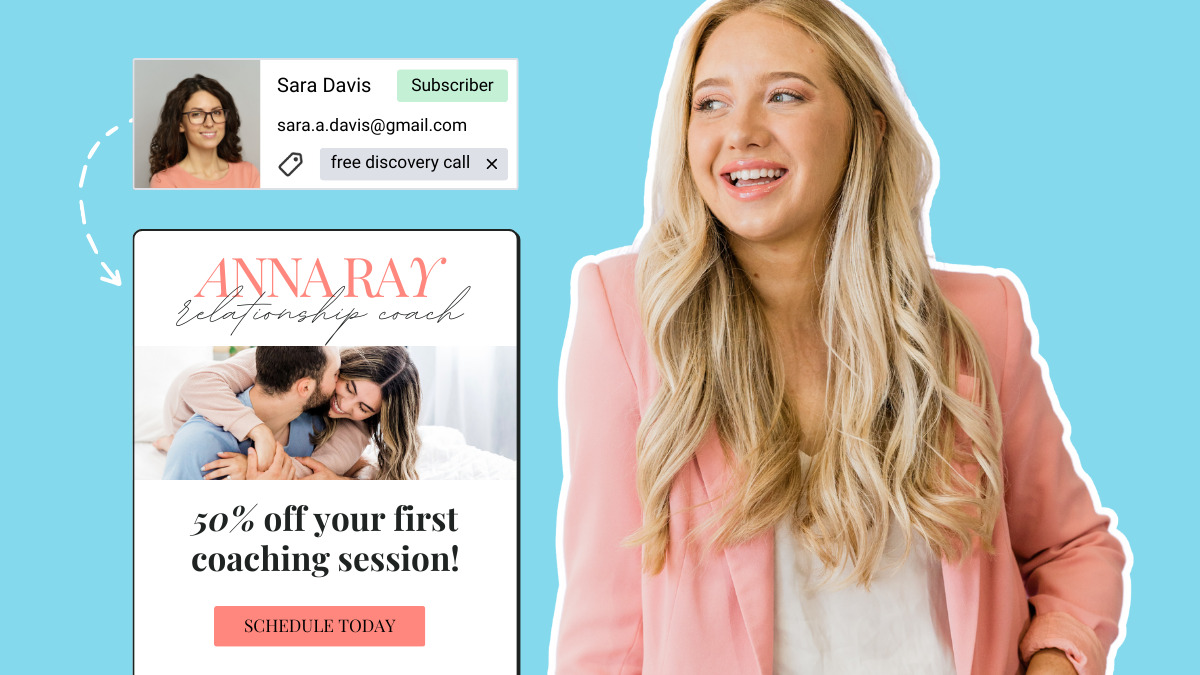
Looking to boost your email open, click, and conversion rates? How about giving your ROI a killer boost?
Behavioral segmentation lets you personalize email content according to consumers’ interests and behavior.
It’s the most effective type of content personalization and has a dramatic effect on your bottom line -- sales.
👉 76% of consumers are more likely to purchase from brands that personalize their communications.
In this guide, we demystify the term “behavioral segmentation” and show you how it works.
Find out exactly what the term means and how you can (easily) use it to personalize your email messages.
Discover everything you need to know about behavior-based marketing, including:
- What is behavioral segmentation?
- Why behavioral segmentation matters to marketers
- Types of marketing segmentation
- Types of behavioral segmentation in email marketing
- How behavioral segmentation is used in email marketing
- How to get started with behavioral segmentation for email marketing
- Behavioral segmentation examples
What is behavioral segmentation?
Behavioral segmentation is an automated, data-based marketing strategy.
It tracks reader interactions in your emails, landing page, and website. Then it uses that data to group your audience into smaller segments based on their interests and actions.
As a result, you can deliver highly effective, personalized email content to the right people at the right time.
For example, food delivery service GrubHub noticed I hadn’t used its service lately. So it sent me an email with the header “It’s been too long: let us treat you to a 20% off offer.”
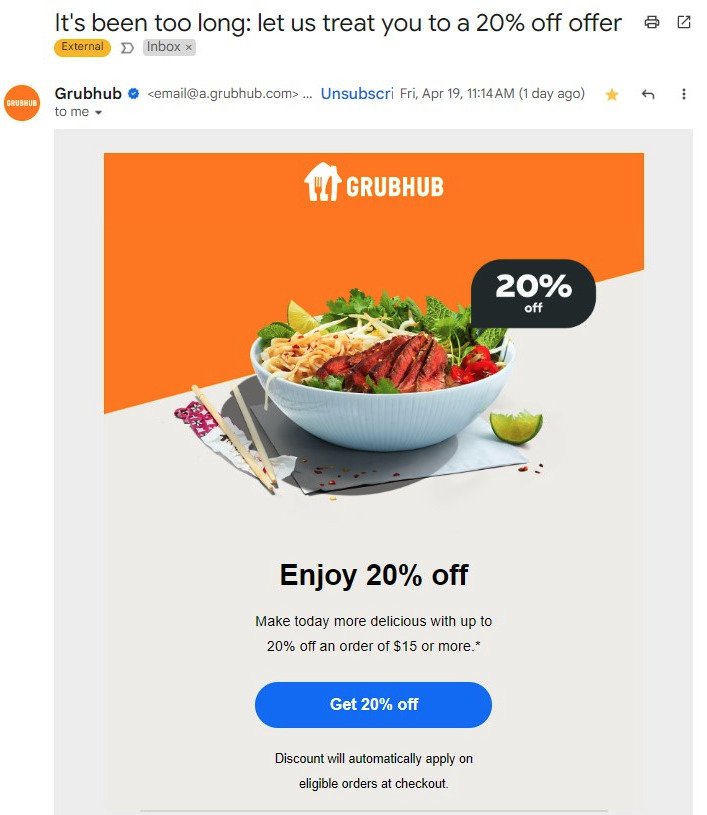
After ignoring Grubhub emails for weeks, it only took one personalized message to reel me right back in. Smart move, Grubhub!
As you’ll see in the next section, I’m not the only consumer who's a fan of personalized content. 🤭
Why behavioral segmentation matters in marketing
Behavioral segmentation is the best and most advanced method of providing personalized content to your audience.
Marketers and consumers alike love personalization.
Personalized marketing campaigns:
- Reduce customer acquisition costs by up to 50%.
- Increase ROI by 10-30%.
- Boost your revenue by 10 - 15%.
- Increase brand loyalty, referrals, and repeat purchases.
For example, to increase engagement and fundraising, The Fisher Center needed a way to personalize communication based on donors’ history and interests.
The non-profit turned to email marketing tools to tag and segment their audience based on behavior such as donation dates.
This personalized approach led to a 500% increase in its email subscriber list.

According to a McKinsey report on personalization, most consumers (72%) expect businesses to cater to their individual needs and interests.
In its report, McKinsey shows that most consumers prefer personalized content.
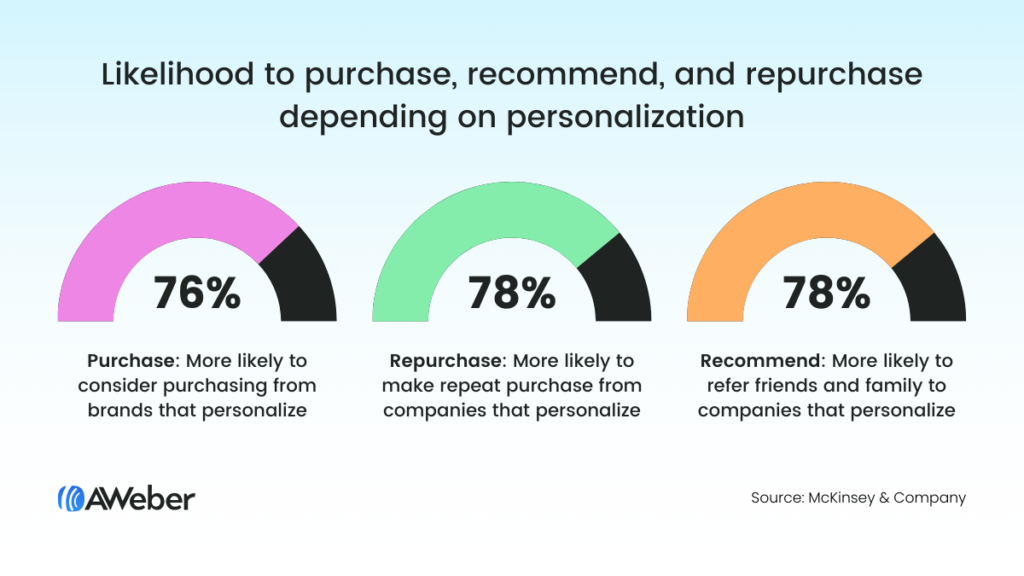
Here’s what the average consumer thinks about personalized marketing:
- 76% are more likely to consider purchasing from brands that personalize their marketing.
- 78% are more likely to recommend brands that personalize.
- 78% are more likely to repurchase from companies that personalize.
TIP: Increase your ROI even more by pairing segmentation with other highly effective marketing strategies such as appreciative email sign offs and brand awareness campaigns.
Types of marketing segmentation
There are many ways to segment your audience for personalization, but none is as effective as behavioral segmentation.
At the heart of behavioral segmentation lies email marketing.
A good email marketing platform allows you to automate the entire process — from collecting behavioral data to sending personalized email campaigns based on that data.
Websites also use behavioral segmentation to fuel their email marketing message and to build dynamic website content.
4 Core types of marketing segmentation
#1 - Behavioral segmentation
Behavioral segmentation groups people according to their interactions with your email messages, landing pages, and website.
It is used to send personalized email content and provide dynamic website content that aligns with consumers’ interests, habits, and place in the buyer's journey.
#2 - Demographic segmentation
Demographic segmentation groups people by variables such as gender, income, level of education, age, and ethnicity.
It can be helpful when developing original buyer personas. However, it relies on assumptions that can lead to poorly-matched content.
For example, IT Cosmetics sent an email with the header “Transform your confidence with a radiant complexion.” The message assumes that all women seek confidence.
While this may be true for many of its female customers, it’s not true for all women -- and could turn some people away.
Demographic assumptions are not always a reliable way to personalize marketing content.
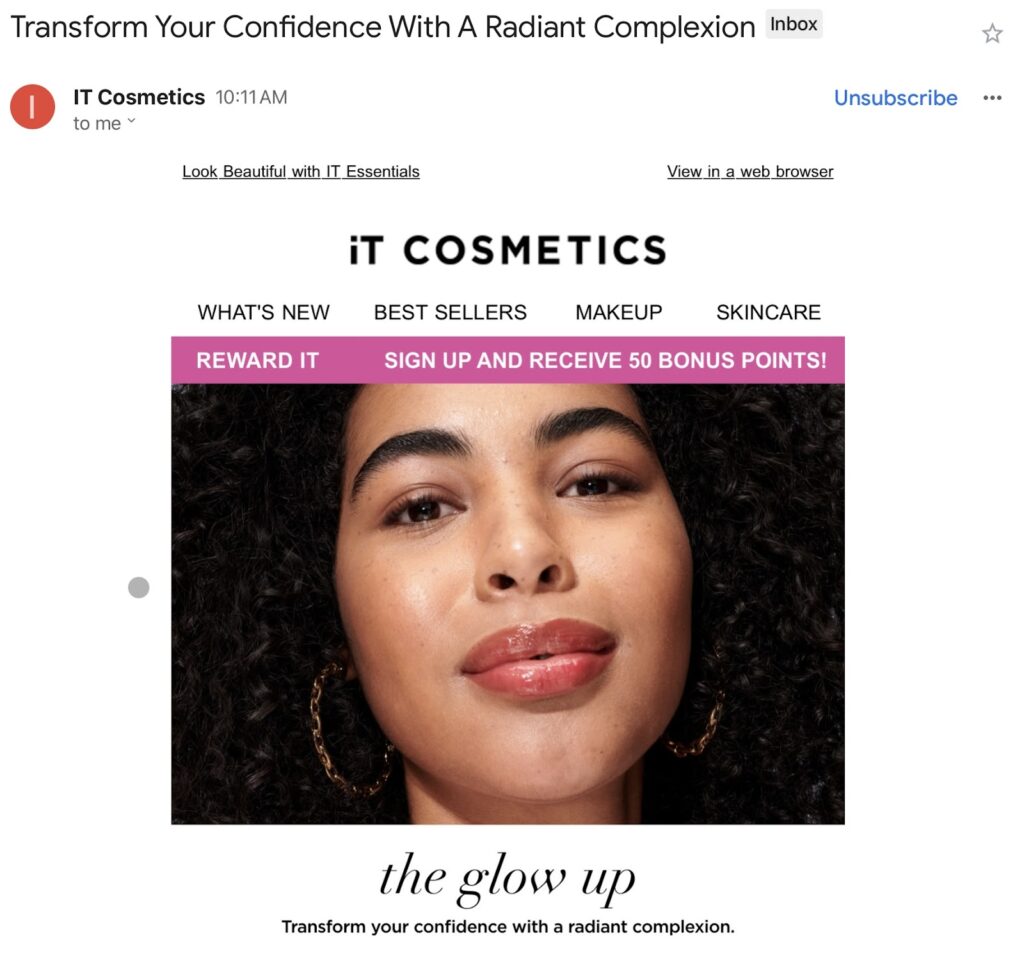
#3 - Geographic segmentation
Geographic segmentation groups people by location and sub-categories like culture, language, and timezone.
Geographic segmentation can be helpful in determining basics such as what language to use, what time to send emails, and what holiday schedules to lean into.
However, geographic data points are vague and don’t provide enough information to create a truly personalized email or website experience.
For example, a meal service using geographic segmentation might promote fried foods to people living in the Midwest and healthy foods to people on the West Coast.
This approach would be based on geographic cliches that cause some readers to quickly lose interest.
#4 - Firmographic segmentation
Firmographic segmentation is used by business-to-business (B2B) companies. It segments people by the characteristics of their company, such as industry, company size, growth rate, and technology used.
If you only sell to other businesses, firmographic data can be very helpful. However, firmographic segmentation doesn’t help companies that sell directly to consumers.
Types of behavioral segmentation in email marketing
Behavioral segmentation in email marketing involves grouping subscribers based on their actions and behaviors.
5 Core types of behavioral segmentation for email marketing
1 - Engagement level: Segmenting subscribers based on their interaction with previous emails, such as:
- Email opens
- Clicks within emails
- Polls and surveys completed
2 - Website activity: Segmenting subscribers based on their interactions with your website, such as:
- Pages visited
- Products viewed
- Actions taken
- Forms filled out
- Abandoned carts
3 - Landing pages: Segmenting subscribers based on the landing pages they respond to, such as:
- Joining your email list
- Scheduling a free consultation
- Downloading lead generation content
- Signing up for a webinar
4 - Purchase behavior: Segmenting subscribers based on their purchasing history, which provides information such as:
- New versus repeat customers
- Purchase frequency
- Average order spend
- Favorite product categories
5 - Buyer's journey: Segmenting subscribers based on their stage in the buyer's journey, such as:
- Awareness
- Consideration
- Decision
- Advocacy
How to use behavioral segmentation in email marketing
Behavioral segmentation in email marketing is an automated process.
Once it’s set up, your email marketing program segments your list into smaller groups based on their interactions with your emails, website, and landing pages.
Then it sends personalized email messages and campaigns to various segments of your list.
For example, imagine you run an online pet supply store. Here’s an example of how email segmentation might help you.
Data:
- You notice that a group of subscribers consistently opens and clicks on emails about dog training products.
- Another group frequently engages with emails about cat-related products.
Segmentation:
- Create a segment called "Dog Training Enthusiasts" for the first group.
- Create a segment called “Cat Lovers” for the second group.
Application:
- Send targeted emails about dog training tips, classes, and discounts to the Dog Training Enthusiasts segment.
- Send targeted emails about toys, treats, and food to the Cat Lovers segment.
Results:
By segmenting your email list, you increase the relevance of your messages. This leads to increased engagement, conversions, and sales.
Behavioral segmentation works because the emails you send become more interesting to your readers. So they’re more likely to open and read your messages instead of ignoring them.
While this all might sound like a lot of work, it’s a fairly simple and quick process that can be fully automated.
Once you create campaigns and set triggers, automation does the rest of the work for you.
Behavioral segmentation in action
In the email below, Petco shares a 20% discount with dog owners who have purchased training classes in the past.
This is a great example of purchase-based behavioral segmentation.
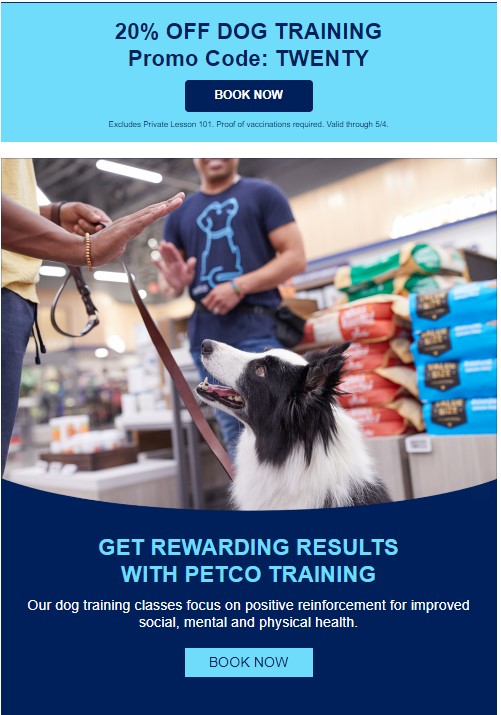
Coursera sends personalized recommendations on courses related to classes I’ve taken in the past.
It’s an excellent example of interest-based behavioral segmentation.
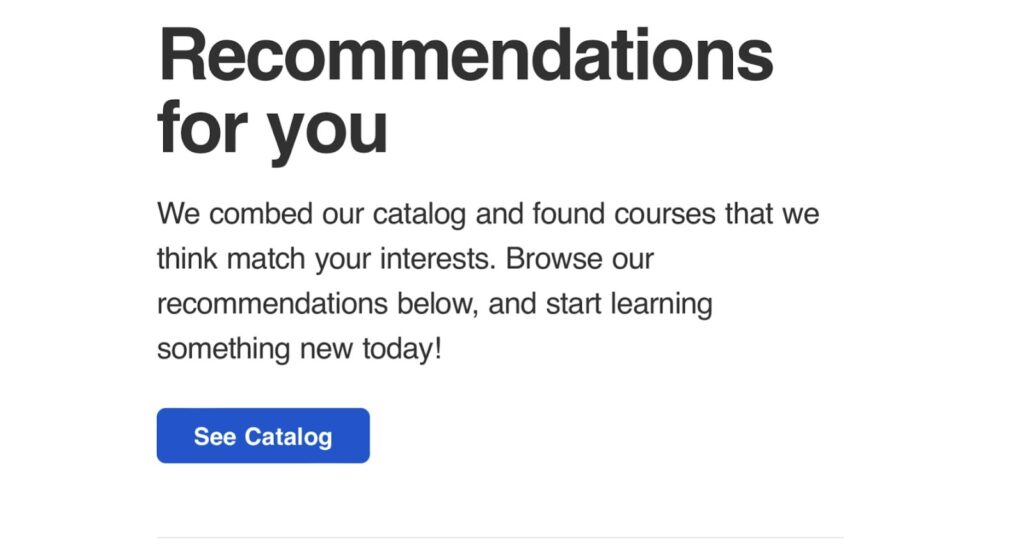
Behavioral segmentation is also used on websites, separate from your email marketing platform.
Sites collect behavioral data and use it to build dynamic website content. This gives visitors a personalized experience.
For example, when I visit AWeber.com, I’m not greeted with a sales page because the site “knows” I’m already a customer.
Instead, I’m welcomed with a login page and special event invitation.
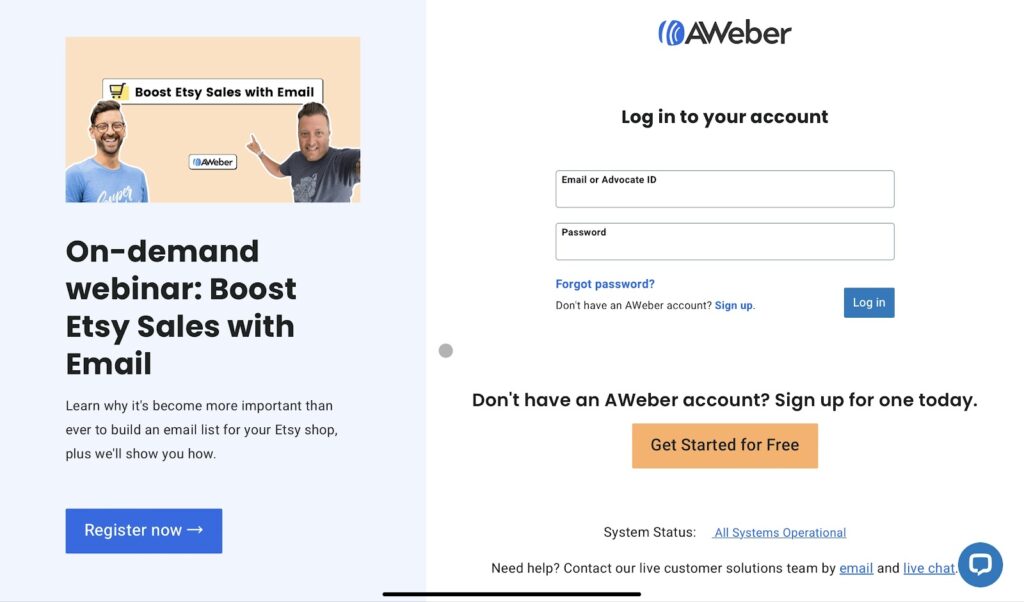
How to get started with behavioral segmentation for email marketing
To get started with segmented campaigns, ensure that your email marketing platform provides the following key features:
- Automated trigger campaigns that allow you to send automated email series based on behavioral triggers.
- Prebuilt campaign templates that allow you to quickly create popular email campaigns like welcome and abandoned cart series.
- Landing page integration that lets you send automated email series in response to interaction with landing pages.
- Website integration capabilities that allow you to send automated email campaigns based on website activity.
If you don’t have these features or if you haven’t chosen an email marketing platform yet, check out AWeber’s Plus Plan. We provide all the tools and features you need to get started with behavioral segmentation.
Depending on which email marketing platform you use, the process of getting started with segmentation may vary.
For example, AWeber’s simple system of creating tags and triggers lets you quickly create segmented campaigns based on user behavior.
In the YouTube video below, Kim Mathiot steps you through using tags to unlock the power of segmentation.
Behavioral segmentation examples
Below are examples of personalized email marketing messages using behavioral segmentation.
Abandoned cart email example
Abandoned cart emails integrate data from your website into personalized emails.
Behavioral trigger: Dropping items into an online shopping cart but leaving the site without making the purchase.
Response: Abandoned cart email encouraging purchase.
For example, have you ever received an email related to items you dropped into an online shopping cart (but never purchased)?
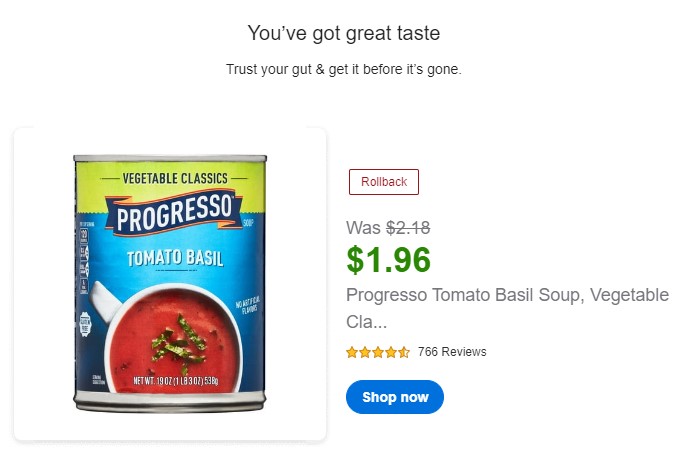
Purchase follow-up email example
Purchase follow-up emails confirm recent purchases and often prompt readers to buy additional items.
Behavioral trigger: Making a purchase.
Response: Follow-up email to encourage add-on sales.
For example, Instacart grocery delivery service sends a confirmation email shortly after you tap “Place your order.”
The follow-up email shows an image of the items you purchased, then encourages add-on sales with a “Add Items To Order” CTA.
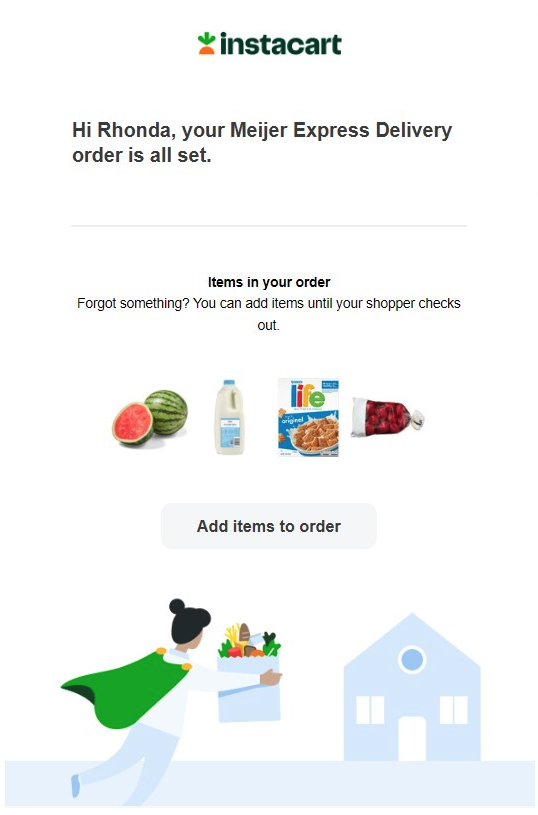
Welcome email example
Welcome email messages (or series) are sent when someone subscribes to your email list.
Behavioral trigger: Joins email list.
Response: Welcome email.
In the email below, Pottery Barn welcomes me as an email subscriber by encouraging me to “Start Shopping.”
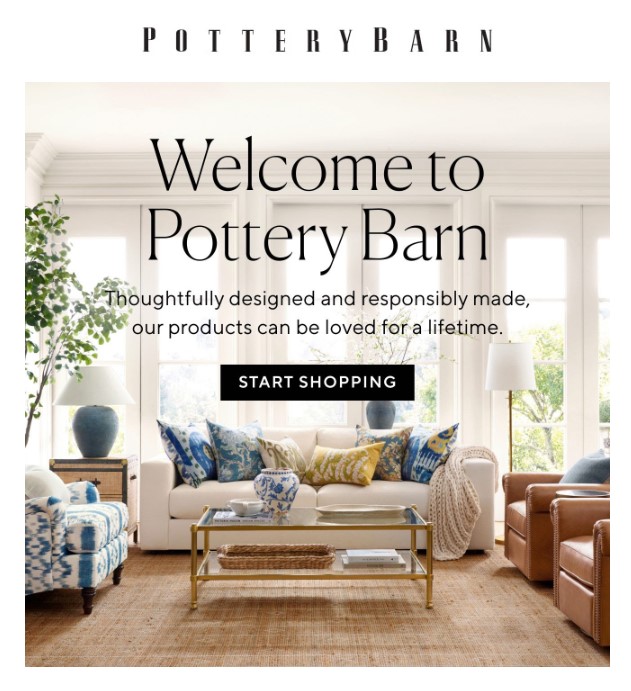
Reminder email example
Reminder emails help people avoid falling through the cracks by encouraging them to take a specific action.
Behavioral trigger: Subscriber inaction related to a specific event.
Response: Reminder email.
For example, I began to sign up for a SimilarWeb free trial because it offered a free report I wanted to view.
But when the signup requested my phone number, I decided the report wasn’t worth the follow-up calls I’d probably receive. So I left the site without completing the form.
In response, I received a personalized email encouraging me to return.
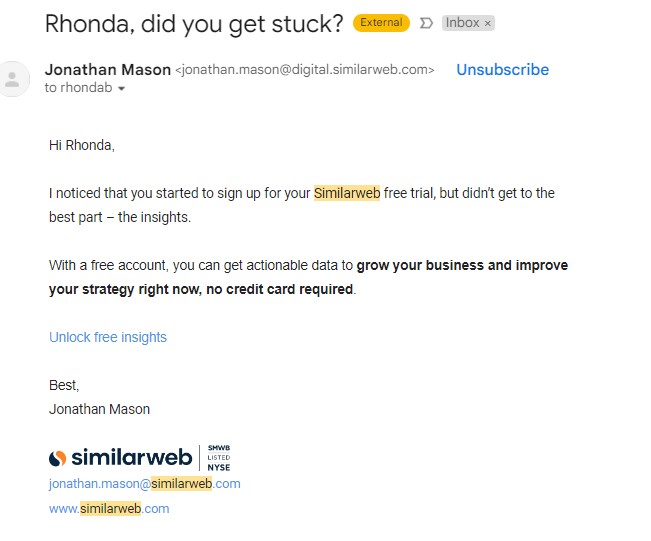
Application confirmation example
When someone submits a form or application on your website or in an email, a receipt confirmation is usually sent.
Behavioral trigger: Submitting an application.
Response: Thanks for your application.
For example, content marketing community SuperPath requires users to fill out an application when joining its community.
After the user submits their application, the brand responds with a “Thanks for your application” email.
Below is a sample from Superpath’s application and its automated email response.
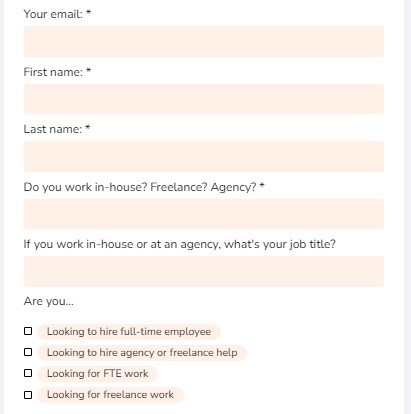
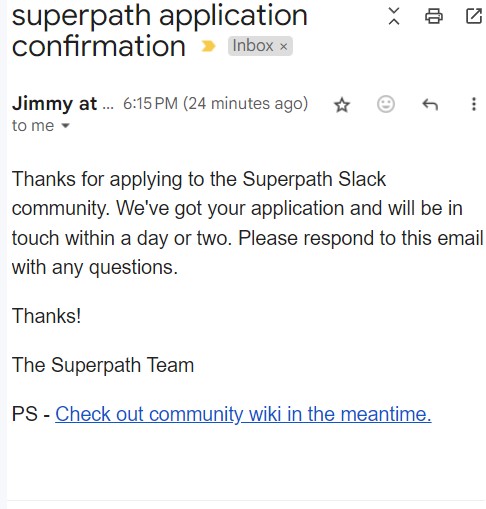
Personalizing marketing content with behavioral segmentation
Behavioral segmentation is the key to unlocking truly personalized marketing experiences for consumers and clients.
By segmenting your list based on personal information such as purchase history, interests, and engagement, you can deliver tailored content that improves relationships with your customers and increases your ROI.
AWeber's Plus Plan provides simple but powerful tools that make it easy to use behavior-based marketing automation. Segment subscribers according to their behavior and send multiple personalized email campaigns — on autopilot.
Ready to enjoy the benefits of behavioral segmentation and personalized marketing? Sign up for AWeber today!
The post Behavioral segmentation 101: A guide for email marketers appeared first on AWeber.
from AWeber https://ift.tt/GJ4rgxX
via IFTTT
No comments:
Post a Comment